Denison Mines (TSX: DML; NYSE-AM: DNN) getting to work on this year’s exploration programs on its Wheeler River, Waterbury Lake and Hook-Carter uranium properties in northern Saskatchewan’s Athabasca basin.
Waterbury and Wheeler River are on the east side of the basin while Hook-Carter is on the west side, near Fission Uranium’s (TSX: FCU; US-OTC: FCUUF) Triple R uranium deposit and NexGen Energy’s (TSX: NXE; NYSE-AM: NXE) Arrow uranium deposit.
“What we’re doing now is being very selective on our exploration front, targeting projects that have the potential to deliver a meaningful discovery in the near-term,” Denison president and CEO David Cates says in an interview with The Northern Miner.
The company plans to drill 13,500 metres across 23 holes at Wheeler, 7,300 metres across 18 holes at Waterbury and 3,900 metres across six holes at Hook-Carter.
It expects to spend $3.2 million at Wheeler this year, and has already begun drilling. Wheeler is a 90-10 joint venture with privately held JCU Exploration, and Denison is funding 90% of all exploration at the project. It consists of two deposits, Phoenix and Gryphon, and several satellite targets.
“In 2018, we started stepping away from those deposits,” Denison vice-president of exploration Dale Verran says. “In 2019, at Wheeler, we’ll continue with regional exploration. We’ve identified some high-priority target areas on the property.”
The company tabled a prefeasibility study for Wheeler in 2018’s third quarter that evaluated developing Wheeler’s Phoenix and Gryphon uranium deposits, both separately and together.
According to the study, Phoenix could produce 6 million lb. uranium oxide per year over a 10-year mine life at US$3.33 per lb. U3O8 cash-operating costs — which would be the lowest cost of any uranium operation in the world. The company could achieve that cost through a in-situ recovery (ISR) mining techniques, which use a solution to leach uranium from the host rock, while it stays in the ground. Denison’s goal is to build the project’s tonnage, and develop a pipeline of ISR deposits.
The ISR method is both more environmentally friendly and cheaper than conventional mining methods. It eliminates shafts, pits, a mill and tailings, bringing a uranium-rich solution to the surface, while leaving everything the miner doesn’t want in the ground. Because the process is so passive, it’s also low on operating costs.
The technique involves a series of borehole wells. The miner injects a mining solution through one of the wells, and, using pressures and the permeability of the rock, the solution migrates through the orebody, leaching a resource, until the miner recovers it through a recovery well. The miner then runs the solution through a small processing plant to precipitate out the uranium.
The technique requires a deposit with a permeable host, like the sandstone at Phoenix. The company’s regional exploration at Wheeler focuses on sandstone hosted targets.
“Our story has really pivoted to being a developer in the past two years, with the prefeasibility study at Wheeler,” Cates says. “If you look at our budgets over the last two years, you’ll see a real switch from exploration, spending around $15 million to now $6 million, but the budget’s going up on the development front. We’re spending $9.3 million for Wheeler this year, primarily on engineering and field tests for our mining method.”
That includes permitting Phoenix, plus running a metallurgical pilot plant tests and ISR wellfield tests to further define the sandstone’s permeability.
Denison can then better model any production scenarios.
Phoenix has 141,000 probable tonnes grading 19.1% U3O8 for a contained 59.7 million lb. U3O8.
Gryphon, which sits in the hard-rock basement, could produce 7.6 million lb. U3O8 per year over 6.5 years at $15.21 per lb. U3O8 cash-operating costs. It contains 1.25 million probable tonnes grading 1.8% U3O8 for a contained 49.7 million lb. U3O8.
Together, the two deposits have a $756-million, after-tax net present value attributable to Denison at an 8% discount rate, and a 33% after-tax internal rate of return.
At Waterbury, Denison will spend $1.8 million on exploration. Denison holds a 65.9% interest in the project. Its partner, Korea Waterbury Uranium Ltd. Partnership, is diluting its interest in the project and will not be funding any share of 2019 exploration.
Denison found Waterbury’s Huskie uranium deposit in 2017. While drilling Huskie in 2017 and 2018, it found northeast structures cutting through the deposit.
That led to a new interpretation that the regional Midwest structure, which controls the company’s nearby Midwest uranium deposits on its Midwest property, continues up to the eastern side of Waterbury.
Denison tested its theory on the project’s GB trend in 2018 and found basement-hosted mineralization, where the company says the trend intersects the Midwest structure.
In 2019 it intends to follow up on the GB trend and test other targets related to the Midwest structure.
Waterbury’s J zone contains 291,000 indicated tonnes grading 2% U3O8 for 12.8 million lb. U3O8.
At Hook-Carter, Denison will spend $1.4 million to complete a first phase of reconnaissance along 7.5 km of the 15 km Patterson Lake Corridor interpreted at the project.
The company started with nine reconnaissance holes in 2018 that tested geophysical targets.
The property is a joint venture with ALX Uranium (TSXV: AL; US-OTC: ALXEF). Denison owns 80% of the project and will fully fund 2019 exploration. It agreed to carry ALX’s 20% share of the first $12 million in exploration expenses when it acquired its ownership from ALX in 2016.
“What’s exciting about Hook Carter is our geophysics, and initial drilling has shown that there are multiple target horizons within that Patterson corridor,” Verran says. “We’ve identified at least three, so we have probably 40 km of strike to test there.
“It’s elephant country for large deposits.”
The company will space its six Hook-Carter holes 1.2 km of strike length apart.
Shares of Denison are trading at 65¢ with a 52-week range of 54¢ to 89¢. The company has a $385-million market capitalization.
It generates cash flow by managing Uranium Participation (TSX: U; US-OTC: URPTF), a holding company that invests most of its assets in uranium.

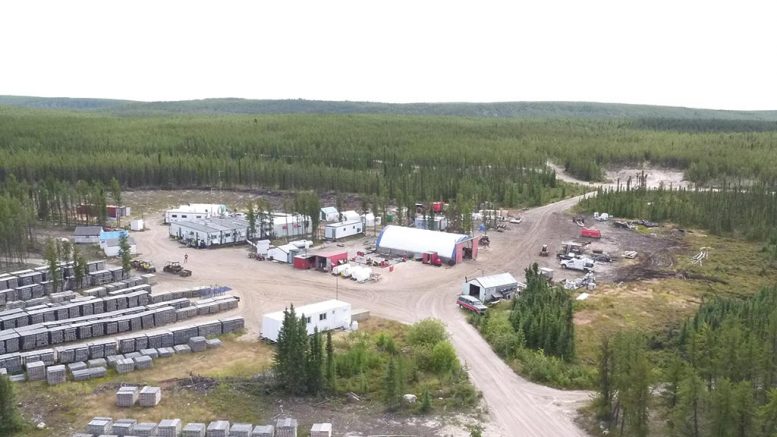
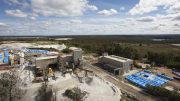
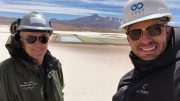
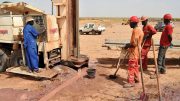
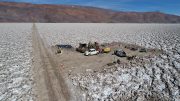
Be the first to comment on "Denison begins $6M drill campaign in Saskatchewan"